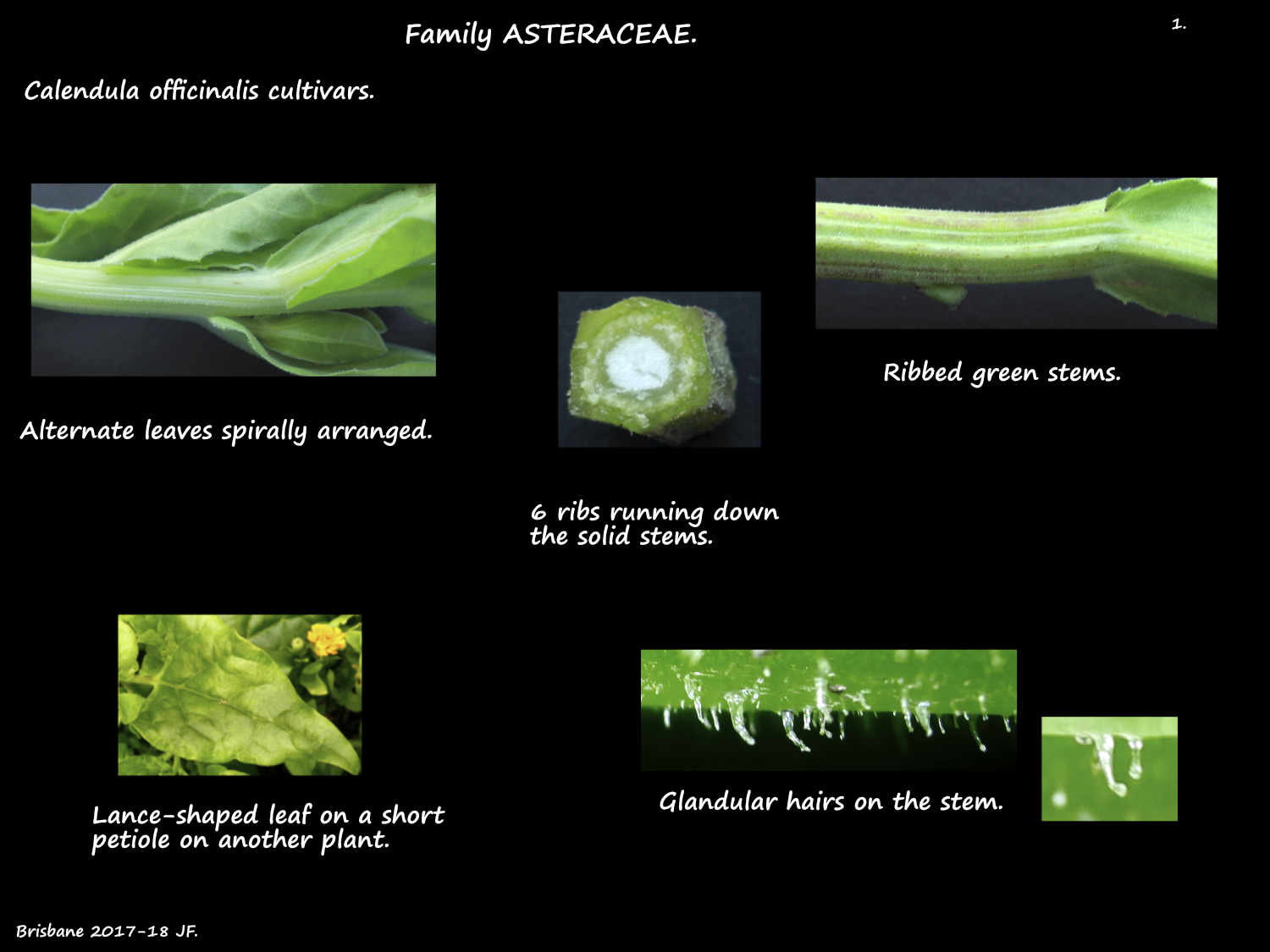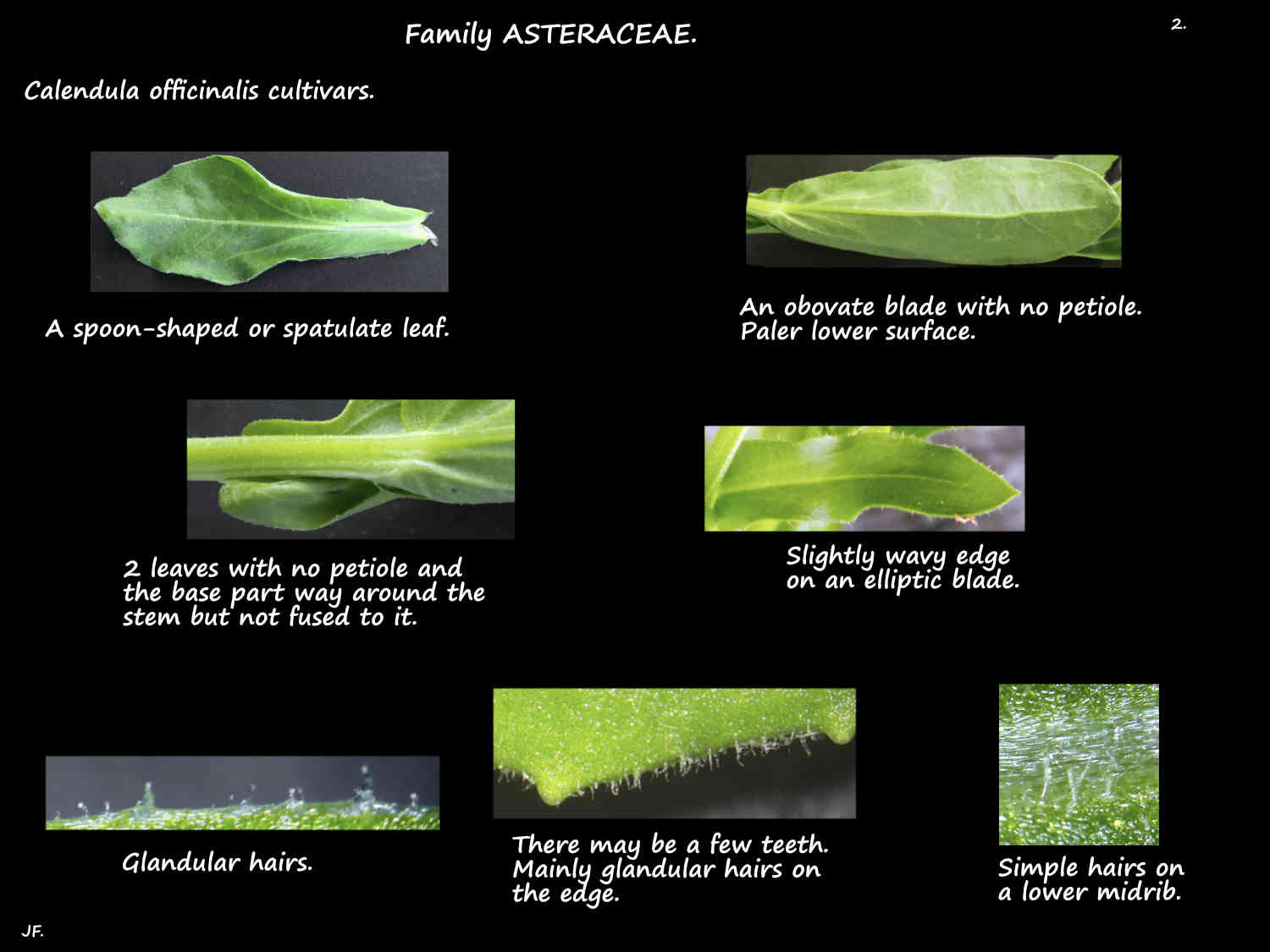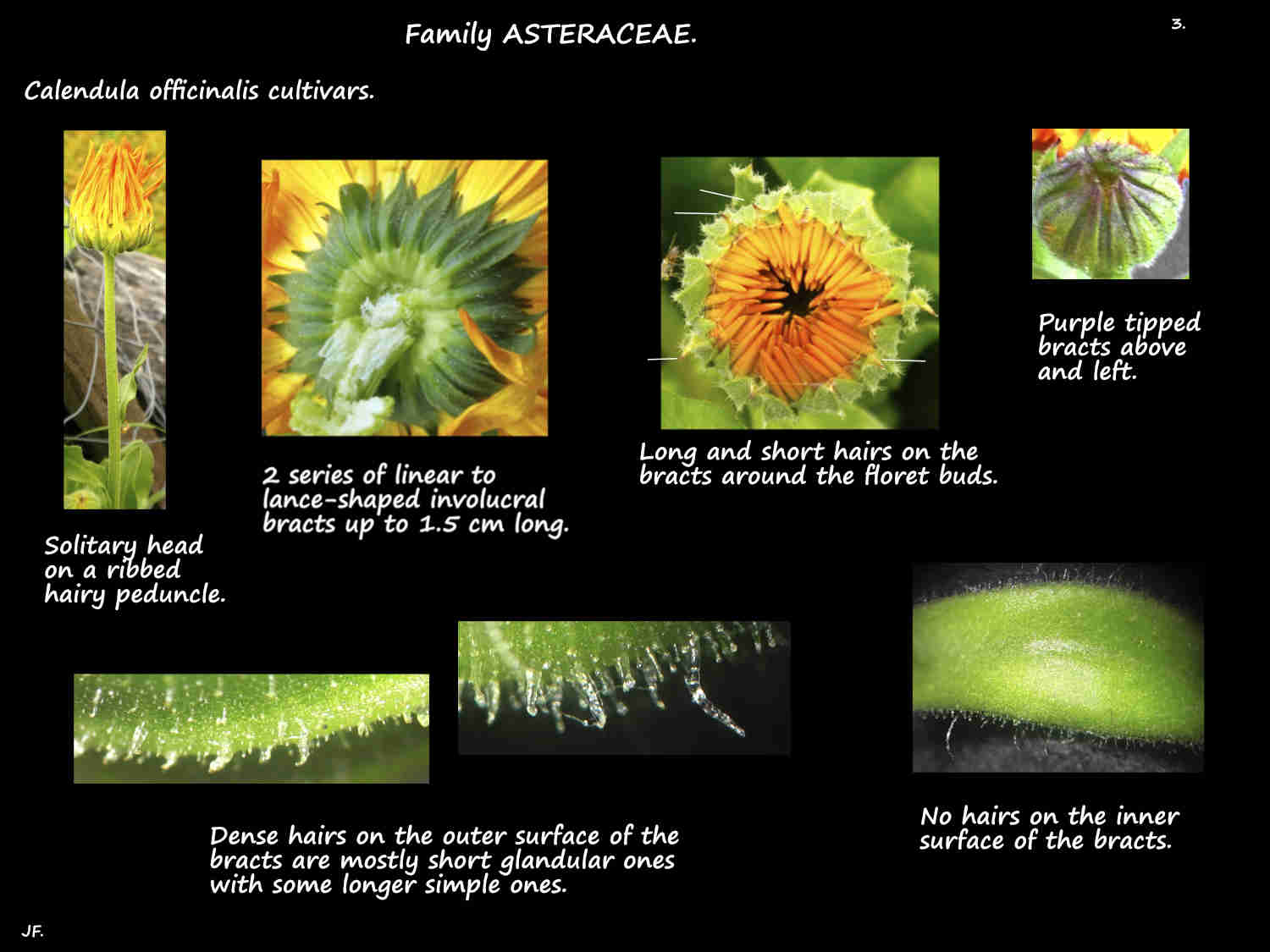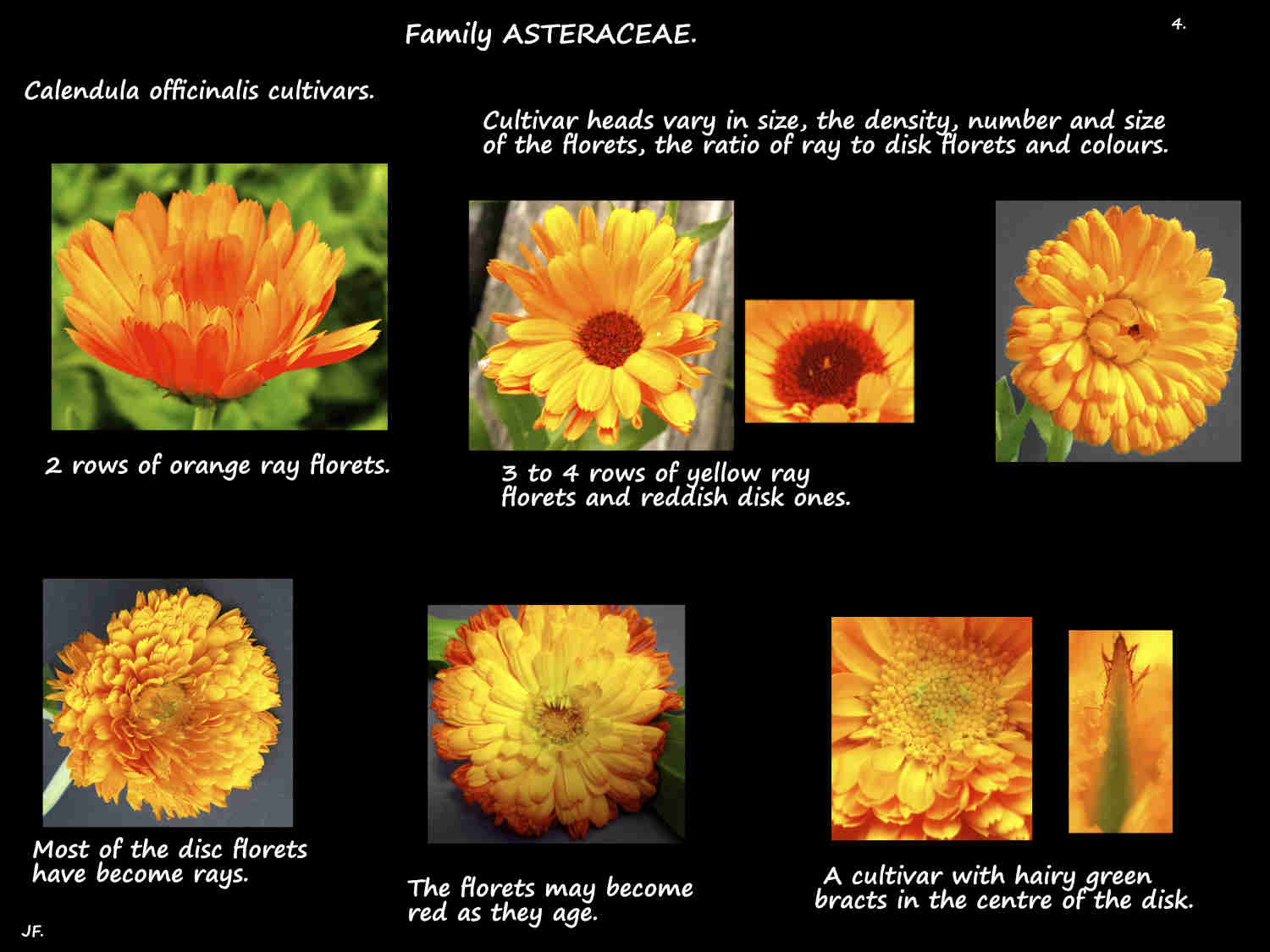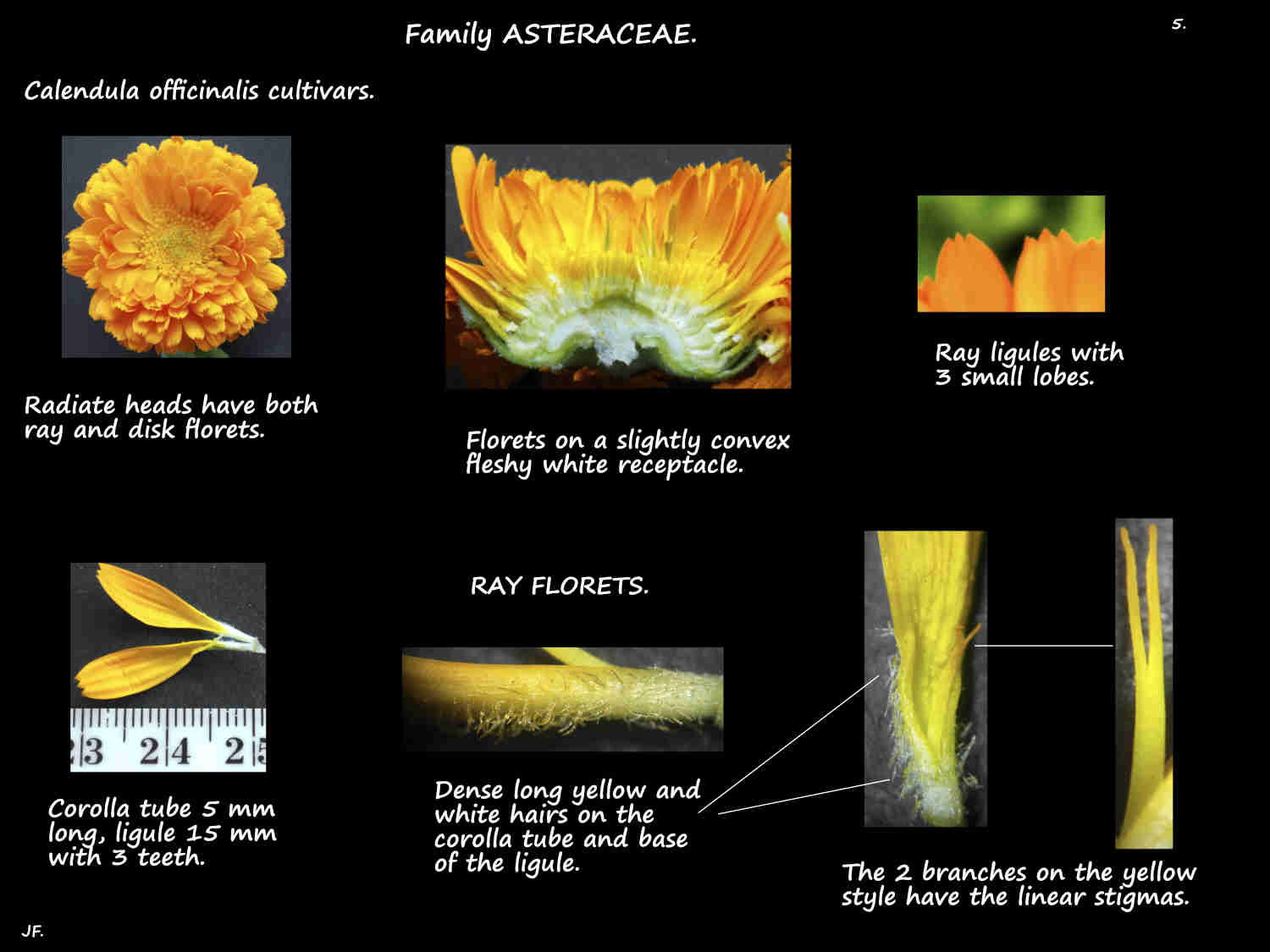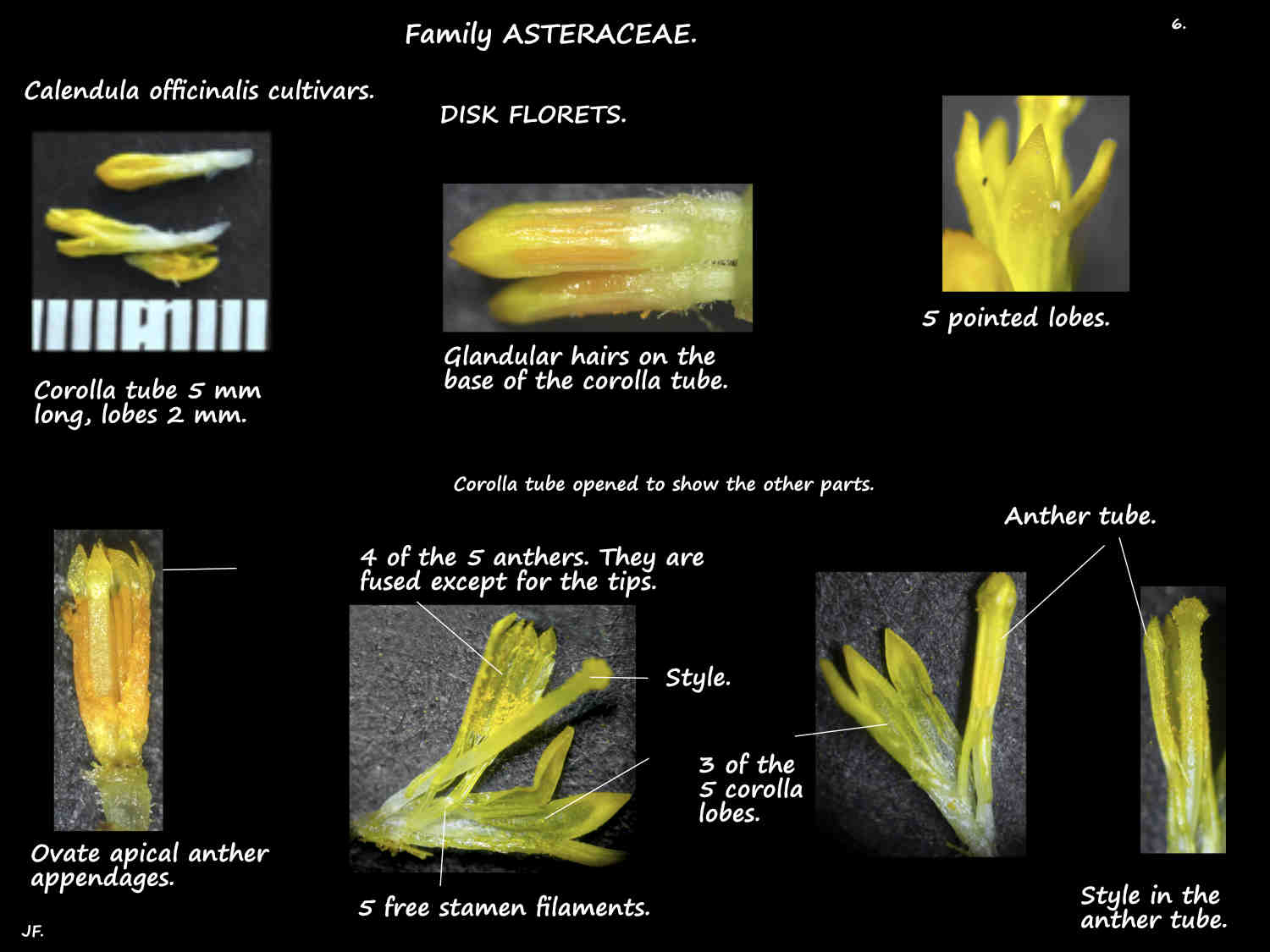Calendula officinalis.
The Common, Pot or Scotch marigold is naturalised in S. E. Queensland.
The annual or sometimes perennial herbs are around 30 to 50 cm high.
The horizontal then erect stems branch and plants can form bushy mounds.
The stem has glandular hairs.
The simple alternately arranged leaves are in a spiral.
Some have a petiole that may have wings down the sides.
Most leaves have a base that surrounds the stem to various degrees but remains free of it.
Leaves are from around 3 to 10 (15 or 18) cm long by 1 to 6 cm wide.
They can be oblong, lanceolate, oblanceolate, obovate or spoon-shaped.
The tip varies from blunt to a tapering point and the edge can be slightly toothed or wavy.
The are glandular hairs on both sides.
The solitary terminal flower-heads are on a peduncle up to 10 cm long with glandular hairs.
The hemispherical heads, up to 5 (7) cm wide have both ray and disk florets (radiate heads).
The involucre at the base has 2 rows of linear, elliptic or lance-shaped bracts or phyllaries.
Up to 1.5 cm long and 2 to 4 mm wide with a pointed tip they have simple and glandular hairs.
The flattish receptacle has no scales (paleae).
Naturalised flowers have only 1 row of ray florets but most seen are cultivars with 2 to many.
Ray florets have a hairy corolla tube a few mms long with a yellow or orange ligule.
The oblanceolate ligule, up to 3 cm long and 0.5 cm wide has 3 small lobes on the tip.
These fertile females have an ovary of 2 fused carpels with 1 locule and a style with 2 stigma lobes.
The disk florets have a corolla tube 3 to 6 mm long with 5 (4 to 7) similar small pointed lobes.
These yellowish-brown bisexual florets have 5 stamens.
The cypselae (achenes) are polymorphic with different types in each head.
They can be variously curved, with a short or long beak and with or without a wing.
Cypselae from the outer disk florets are 12 mm across and the inner ones only 5 mm.
The Garden or Pot marigolds seen are cultivars.
There are dwarf to tall plants and some with variegated leaves.
Heads can be single, semi-double or double and with 1 row of ray florets up to being almost all ray florets.
The large to small heads can have loose or tightly arranged florets and the disk florets may be tufted.
Florets can be single, bi- or tri-coloured between or within different florets.
As well as shades of yellow and orange colours include red, burgundy, brown, peach, pink and apricot.
J.F.

